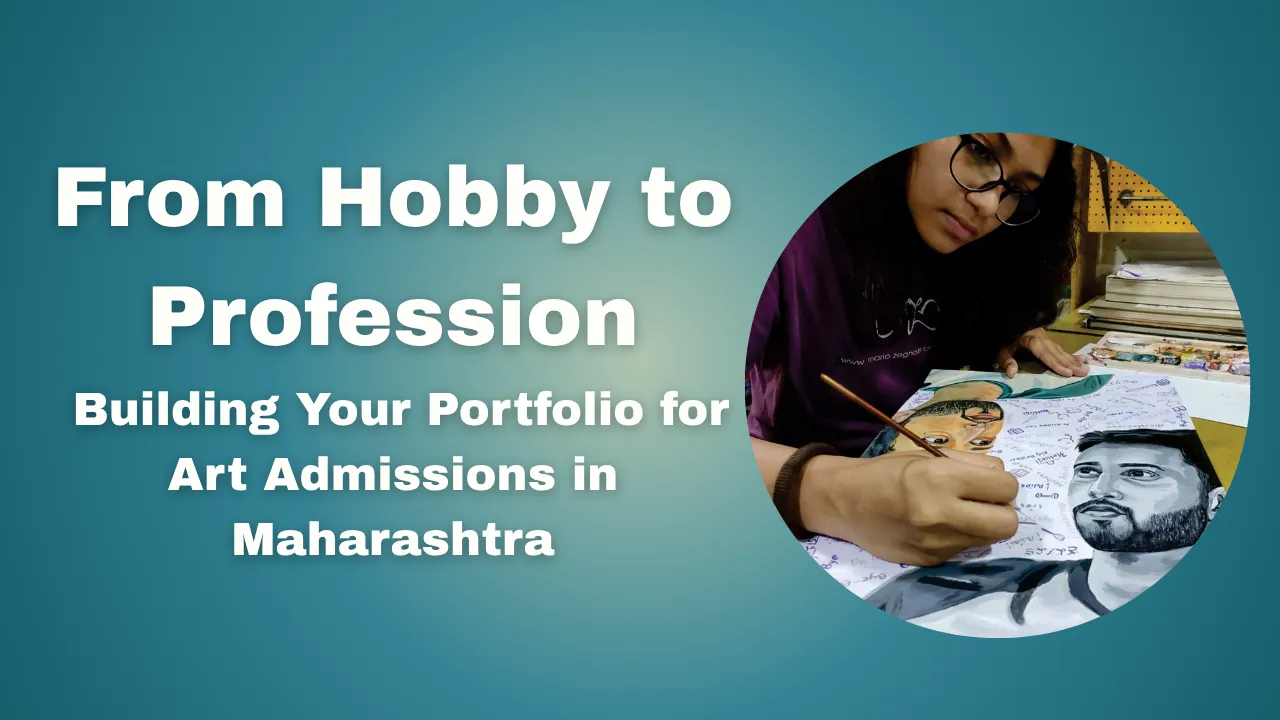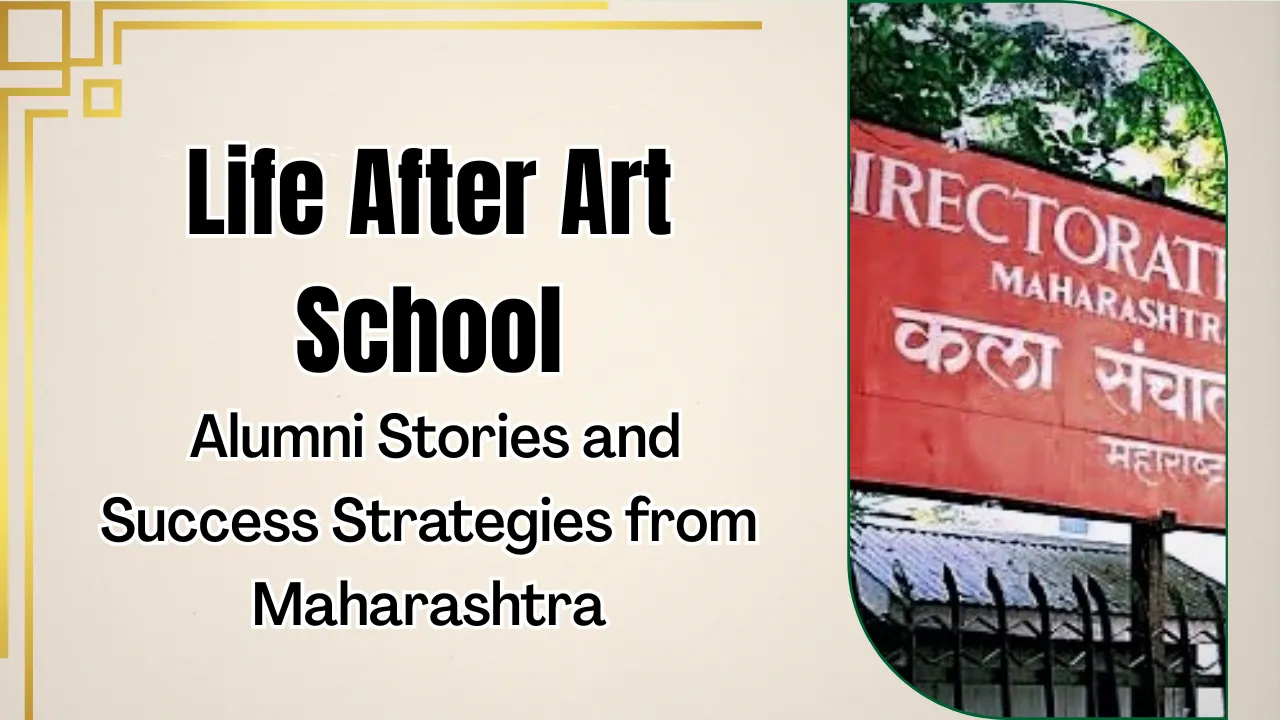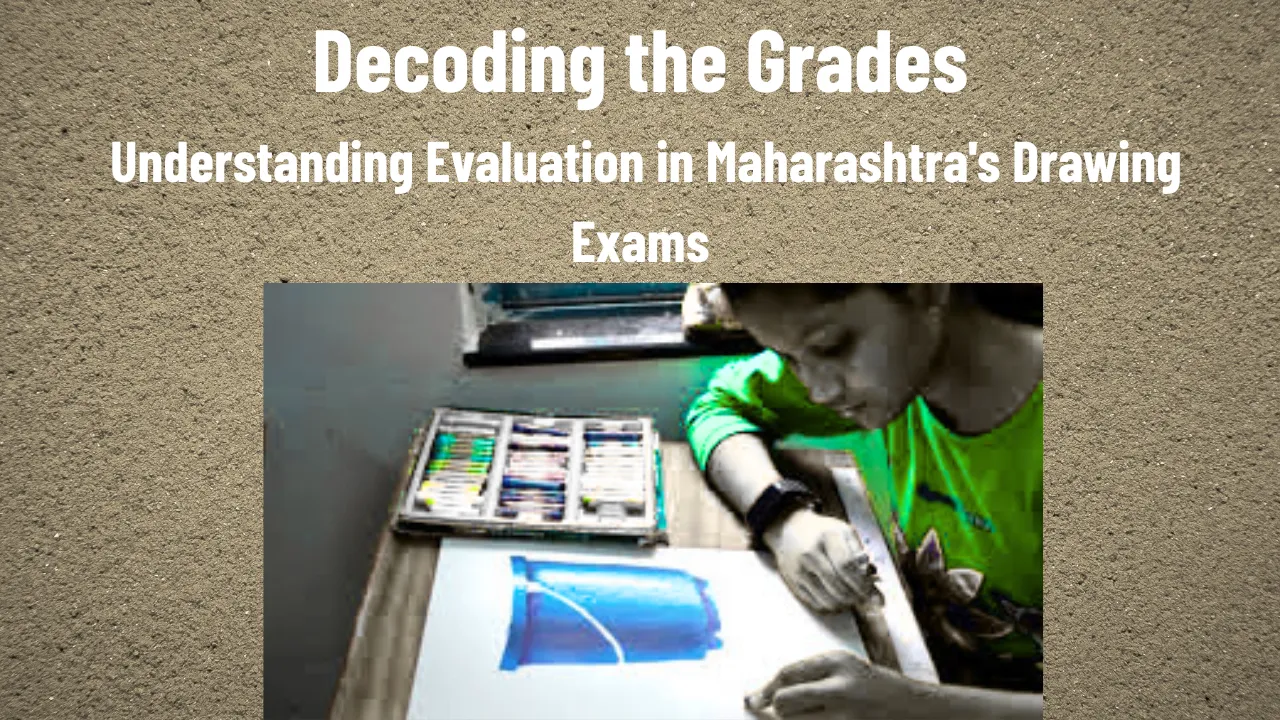Building Your Portfolio for Art Admissions in Maharashtra: Turning a passion for art into a professional career begins with more than just a dream—it starts with a portfolio that tells your artistic story. For students in Maharashtra aiming to secure a seat in reputed institutions like Sir J.J. School of Art or Abhinav Kala Mahavidyalaya, your portfolio is more than a collection of drawings; it’s a reflection of your journey, talent, discipline, and individuality. While clearing the Maharashtra Art CET is necessary, it’s your portfolio that truly allows admission panels to see your creative mind at work.
Building a great portfolio takes time, effort, and clarity. It needs to showcase strong fundamentals, a variety of work, personal expression, and professionalism. Whether you’re exploring art forms in school or have been sketching as a hobby, knowing what to include—and how to present it—can make all the difference. This guide will walk you through how to craft a portfolio that opens the door to serious art education in Maharashtra.
Understand the Requirements
Before you start, check the specific requirements of the colleges you’re applying to. Each college may ask for a different number of works, particular subjects, or certain mediums. Some ask for 10 to 20 artworks, and a mix of drawings, color studies, and designs. They may also want to see sketchbooks or concept development. Most importantly, make sure your submissions are original and follow any themes or formats they request—whether digital or physical.
Build Strong Fundamentals
Your basics should be solid. Drawing is key, especially observation-based work like still life, figure drawing, and simple objects from real life. Add a few works that show your sense of perspective and understanding of form. Color theory and basic composition also matter—your use of space, balance, and visual harmony should be evident. The admission panel will look for confidence in linework and your ability to capture light, shadow, and textures.
Add Variety to Show Range
A well-rounded portfolio goes beyond one style or subject. Include a mix of artworks—people, places, objects, and imaginative scenes. Use different materials such as pencil, ink, watercolor, or digital tools if you’re applying to design or applied arts programs. Size and scale can vary too. This not only shows skill but adaptability and creativity. Personal pieces that reflect your cultural roots, life experiences, or emotions can give your portfolio a unique touch.
Show Your Process
Colleges value how you think just as much as the final product. Sketchbooks or development pages show your creative journey. Include rough drafts, idea maps, or progress shots of complex artworks. These help admissions teams understand your problem-solving skills and your approach to building a concept or design from scratch. It’s okay if not every piece is perfect—what matters is that you’re exploring and evolving.
Focus on Presentation
Even strong artwork can be overlooked if poorly presented. Make sure your portfolio is clean and organized. For physical submissions, keep papers neat and flat, with clear labels for each piece. If submitting digitally, use clear, high-quality images. A simple portfolio case or a well-arranged PDF can make a good impression. You can also include a short artist statement explaining your influences and what art means to you.
Seek Feedback and Refine
Don’t create your portfolio in isolation. Show your work to teachers, mentors, or practicing artists for honest feedback. They can help you spot errors, suggest improvements, or guide you on selection. Peer reviews are also helpful—sometimes fresh eyes can spot something you missed. Be open to criticism and keep refining your work to reflect your true potential.
FAQs
Q1. How many pieces should a portfolio include?
Typically, 10–20 artworks showing variety, quality, and personal vision are ideal.
Q2. Is a sketchbook necessary?
Yes, it highlights your creative process and thinking behind the final artwork.
Q3. Can digital art be included?
Yes, especially for applied art streams or design-related programs.
Q4. Should I follow a theme in the portfolio?
Not always, but a few themed works can show focus and creative interpretation.
Q5. How do I improve my portfolio quickly?
Practice daily, study real-life objects, take feedback seriously, and revise your work regularly.
Final Thought
Your portfolio is your artistic fingerprint—one that speaks before you do. Begin early, stay consistent, and let each piece show your growth and personality. Whether you dream of becoming a fine artist, designer, or illustrator, this is your first step into the professional world of art in Maharashtra.











